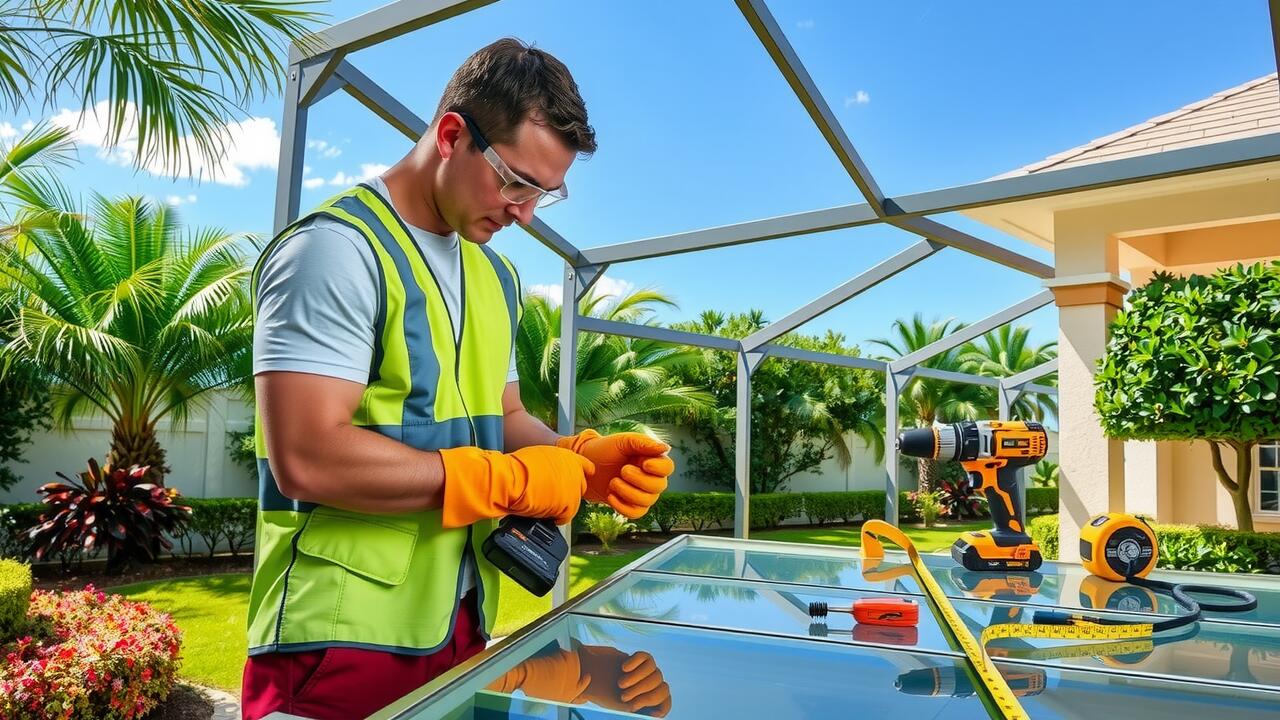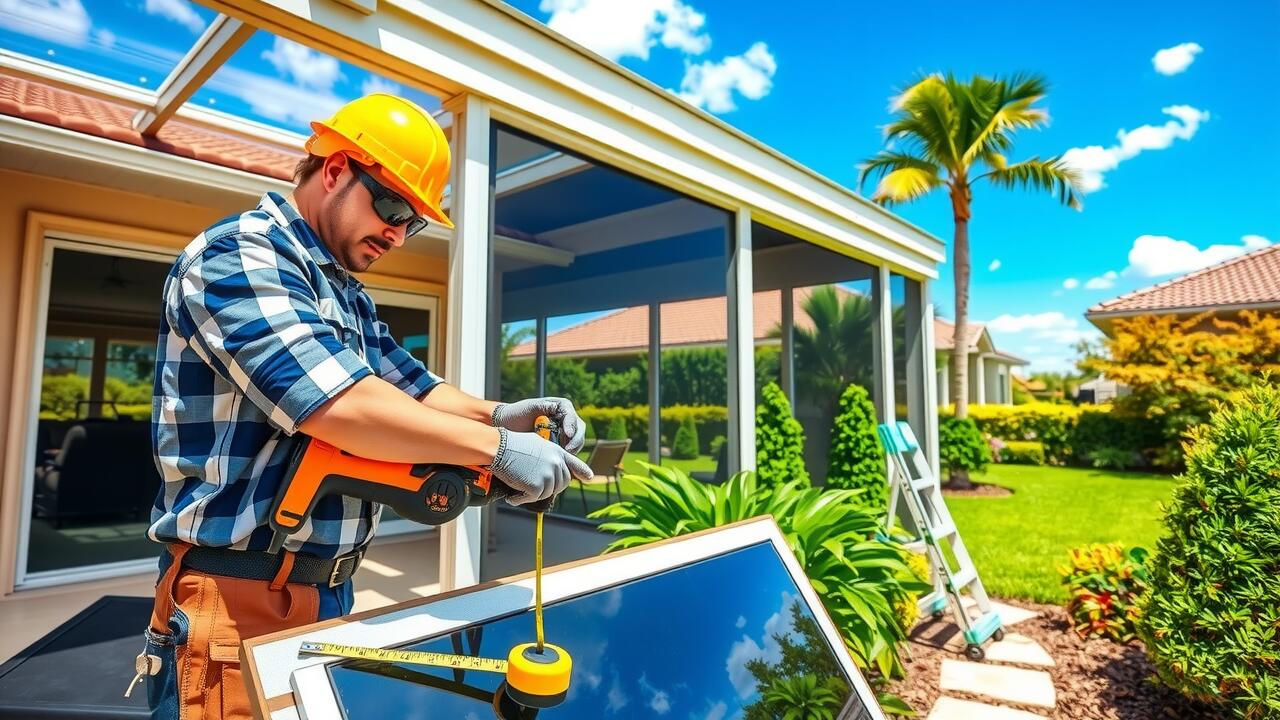
Additional Features that Influence Pricing
When considering the cost of building a 20×20 screened-in porch, additional features can significantly impact the overall pricing. Upgrading materials for flooring, roofing, or screens can enhance the aesthetic appeal and durability of the structure, but they come with added costs. Features such as custom railings, integrated benches, or decorative columns also contribute to the final expense. Homeowners might also want to consider adding lanai enclosures to their porch, which can further increase functionality and provide an inviting outdoor living experience.
Consideration of heating and cooling options adds another layer to the project budget. Installing ceiling fans or electric heaters for year-round comfort can elevate costs but improve the usability of the space. The choice of windows, from standard screens to more robust sliding or removable options, will also affect pricing. Upgrading to energy-efficient glass can lead to higher initial costs but might reduce long-term energy expenses, making it a worthwhile investment for many.
Electrical Work and Lighting Options
Incorporating electrical work and lighting options into a screened-in porch significantly enhances its functionality and aesthetic appeal. Proper lighting can create a welcoming atmosphere for evening gatherings and provide adequate visibility for outdoor activities. Homeowners should consider various lighting options, such as recessed lighting, wall sconces, or string lights. Additionally, installing ceiling fans or heating elements can foster comfort during warmer or cooler months. These features may increase the overall project cost but often prove worthwhile for added convenience and ambiance.
Choosing a contractor experienced in creating Lanai Enclosures can help ensure that electrical installations are safe and code-compliant. Properly planning the electrical layout is essential to avoid future issues. Homeowners might also consider smart home integration for lighting and temperature controls, which can elevate the functionality of the screened porch even further. By investing in these electrical features, you can greatly enhance the usability of your space, creating a comfortable retreat for family and friends year-round.
Seasonal Timing and Its Impact on Cost
The timing of your screened-in porch construction can significantly influence the overall cost. Demand typically peaks in the spring and summer months as homeowners seek to enjoy outdoor spaces during warmer weather. During this busy season, contractors may charge higher rates due to increased workload and limited availability. Opting to build during the off-season can yield considerable savings, as many builders lower prices to maintain steady work throughout the year.
Homeowners who venture into off-season construction may also find more flexibility in scheduling. This can lead to faster project completion and the potential for premium materials at discounted rates. Companies like Lanai Enclosures often offer seasonal promotions or discounts, making it an ideal time to consider such upgrades without straining your budget. Careful planning around seasonal considerations can ultimately play a pivotal role in managing overall costs while achieving quality craftsmanship.
Benefits of Off-Season Building
Building during the off-season can lead to significant savings on construction costs. Contractors often experience a slowdown in business during these months, which may result in lower labor rates and better availability. This can create an opportunity for homeowners to negotiate pricing and secure skilled tradespeople who might otherwise be booked solid during peak seasons.
Additionally, choosing to construct a screened-in porch, such as a lanai enclosure, in the off-season allows for less disruption to daily life. Weather conditions during certain times of the year may be more conducive to construction, leading to a smoother and quicker build. With fewer projects ongoing, contractors can often focus more attention on individual jobs, ensuring quality work and timely completion.
Financing Options for Porch Construction
Homeowners looking to finance a screened-in porch can explore several options to make their projects more affordable. Traditional bank loans are a common choice, offering a lump sum that can be paid back over time with interest. In addition, credit unions often provide favorable rates compared to commercial banks. Another option includes personal loans specifically designed for home improvement, which can cover the costs of construction and materials, including specialized features like Lanai Enclosures.
Beyond loans, grants may be available for specific home improvement projects. Certain local or state programs aim to encourage energy-efficient upgrades, which can partially fund a screened-in porch build. Researching various financing avenues can reveal options tailored to individual financial situations. The right combination of loans or grants can significantly reduce the initial burden of building a porch while enhancing the value of a home.
Loans and Grants for Home Improvement
Homeowners looking to finance the construction of a screened-in porch can explore various loans and grants designed for home improvement projects. Many local and federal programs provide funding options specifically for enhancements that increase property value and improve livability. These financial tools can help cover costs associated with features like Lanai Enclosures, which not only add to the aesthetic appeal but also offer increased functionality to outdoor spaces.
Additionally, some states offer grants aimed at supporting environmentally friendly construction practices. Homeowners may benefit from these programs if their porch design includes energy-efficient materials or systems. It’s essential to research eligibility criteria and application processes to determine the best options for funding a new screened-in porch. Investing time in understanding available financial aid can lead to significant savings on such projects.
FAQS
What is the average cost to build a 20×20 screened-in porch?
The average cost to build a 20×20 screened-in porch typically ranges between $15,000 to $30,000, depending on materials, labor, and additional features.
What additional features can increase the cost of a screened-in porch?
Additional features such as custom lighting, electrical work, upgraded flooring, and built-in furniture can significantly influence the overall cost of a screened-in porch.
How does the timing of construction affect the cost?
The cost of building a screened-in porch can vary based on seasonal demand. Building during peak seasons may result in higher prices, while off-season construction often offers lower rates and better availability of contractors.
Are there financing options available for building a screened-in porch?
Yes, various financing options are available for porch construction, including home improvement loans, personal loans, and grants that can help cover the costs.
Is it cheaper to build a porch in the off-season?
Generally, yes. Off-season building can lead to lower labor costs and fewer delays, resulting in overall savings on your porch construction project.
